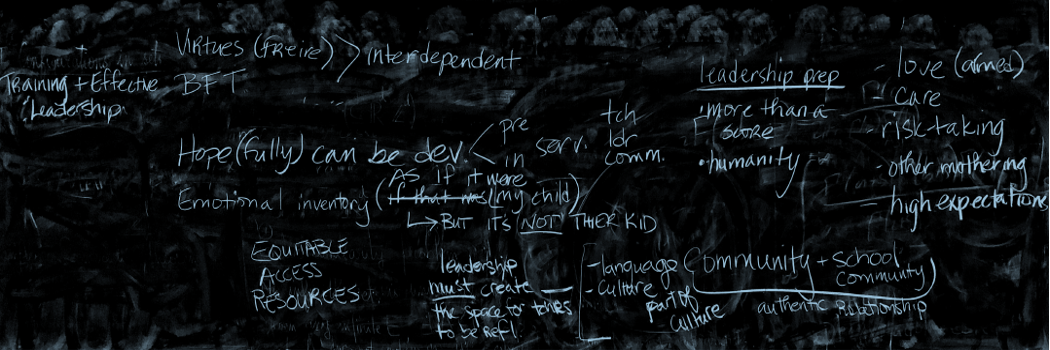Radical Care Week #8/March 25, 2021
This week’s reading on radical care in urban school leadership provided a richly detailed case study of one principal and his leadership strategies—all of which were coherent and many of which seemed completely innovative. The coherence was centered on the five components outlined by the author (p. 7): embracing a spirit of radical hope; adopting an anti-racist, social justice stance; cultivating authentic relationships; believing in students’ and teachers’ capacity for growth and excellence; and strategically navigating the sociopolitical and policy climate. Several of Principal Byron Johnson’s (pseudonym) innovative and strategic decisions stood our for me: using his budget to hire student support staff—counselor, social worker, parent coordinator—rather than an assistant principal; placing himself outside his office on a regular basis, where he could simultaneously observe the school in its daily interactions, build relationships, and model the school’s values for teachers and students.
I was struck also with the emphasis Johnson placed on exposure as a force in his own life, noting that his childhood move from the Bronx to the Upper East Side afforded him an opportunity to observe wildly divergent social and economic circumstances. In my view, exposure is an under-investigated phenomenon that is part of the opportunity gap. I remember hearing a third-grade teacher in the Bronx reporting on a question in the New York State ELA exam that stymied her students because it talked about “stained glass windows.” While most of her students were quite able to decode the words, they had no idea what the phrase meant—since the churches in their community were located mostly in storefronts. This anecdote speaks to the cultural bias in standardized tests, for sure, but it also highlights the role of exposure in rounding out the education of all young people, especially those growing up in marginalized communities.
One final observation: I appreciated the role of reciprocity in this account—that the researcher and principal met when the principal supervised a leadership intern from the researcher’s university; that the principal served as a willing research subject over two years; that the researcher was able to assist the principal in planning and implementing a citywide conference. Clearly, both parties (as well as the field of education) benefitted from the partnership.




Hey Jane! I also loved the reciprocity so clearly present in this article. I think it is something we should all strive for in our research (even when it’s quantitative). If I read correctly, it seems that Rosa’s conversation with Principal Johnson even influenced his thoughts and actions a bit throughout the study. Which is so cool. It’s almost like an experimental study design but it’s actually beneficial to everyone! It makes me think about how all of us should be doing our best to use all of this stuff we learn in the academy for something productive. Obviously I am not the only one who thinks so considering the GC has the PublicsLab. But we can pretend that this comment is a fresh, novel, innovative idea.
Hey Jane,
I just wanted to echo Augusts point.
I also wondered how might we define exposure within a capitalist context.